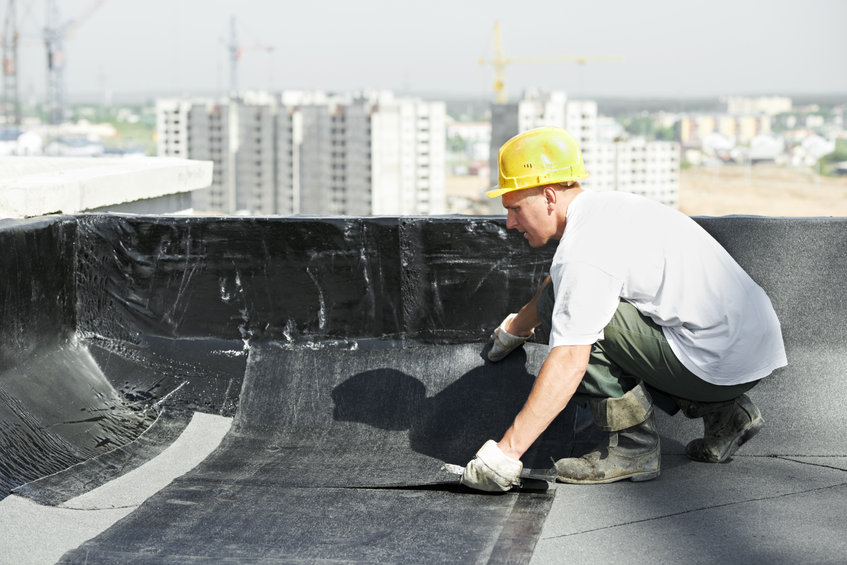Types of Rubber Roofing Materials
- Chlorosulfonated Polyethylene (Hypalon)

The shorter name for this type of rubber roofing material is Hypalon. It is a type of synthetic rubber that is highly resistant to fire, oil, acids, gas, and light. The strength and versatility of Chlorosulfonated polyethylene are what make it a good rubber roofing material for both residential and commercial buildings. However, it is not used much today because of a few downsides such as shrinking and chalking that can be avoided by proper treatment before installation. If left untreated, it could lead to sealing problems of the materials on the roof.
- Rubber Shingles
From a distance, rubber shingles are often mistaken for slate shingles because they look identical. However, they come in a wide variety of styles and color options that can help differentiate the two. Rubber shingles are made from recycled tires and other components such as sawdust. They are cheaper and easy to put in place than other shingle material options. They are ideal for all types of homes and buildings because of their durable and fire-resistant capabilities. Although this type of rubber roofing material does not stick out like slate shingles, they look modern and clean once they are in place.
- Ethylene Propylene Diene Monomer (EPDM)
Of all the types of rubber roofing materials, EPDM stands out as one of the best in its category and has always been a favorite option for low slope roofs. It is known to withstand all kinds of climate and elements including UV rays, wind damage, high temperatures, and other sorts of weathering. Roofs of different heights and shapes can benefit from the unique properties of EPDM roofing material. Although EPDM has a few downsides to take into consideration, it is affordable and easily repairable when damage occurs.
Installation of Rubber Roofing Material
Just like other types of roofing materials, rubber requires adequate preparation before installation. First, you need to clean and strip off the roof deck before coating it with an adhesive. This process allows the roofing material to bond perfectly with the surface. Next, you need to cut the rubber rolls to precision and spread them across the roof. It is important to smooth out the material as it prevents the formation of air bubbles. Lastly, you need to tape and seal the seams to prevent water leakage and ensure a snug fit. For a more attractive roof system, consider installing rubber shingles on top of rolled rubber to get the best of both worlds.
Reasons to Install Rubber Roofs
- Affordability
Rubber is relatively affordable in terms of market price and installation costs. As a lightweight roofing material, it is cheaper to install and can save a considerable chunk of money because of the lower labor and installation costs. To ensure it is properly installed, we recommend consulting a licensed roof installer to handle the installation for you.
- Lifespan and Maintenance
A rubber roof can be installed in long, single, or wide sheets based on the nature of your roof deck to give fewer seams. This helps to minimize the risk of water leakages on the roofing system. Since modern types of rubber roofing materials are resistant to UV rays and can withstand strong winds, they can last for a very long time with very little maintenance.
- Energy Efficiency
A rubber roofing material can regulate the heating and cooling effect in your home by reflecting the sun’s rays or trapping in heat. EPDM roofs are known to insulate a home by keeping it cooler during summer, which helps to reduce air conditioning costs.
Rubber is used as a roofing material because of its unique properties and eco-friendly nature. They are ideal for flat or slightly pitched structures and can last for a very long time when installed properly. Although it is considered unattractive compared to other roofing options such as asphalt shingles, you can always enhance its appearance using acrylic paint or rubber shingles.
